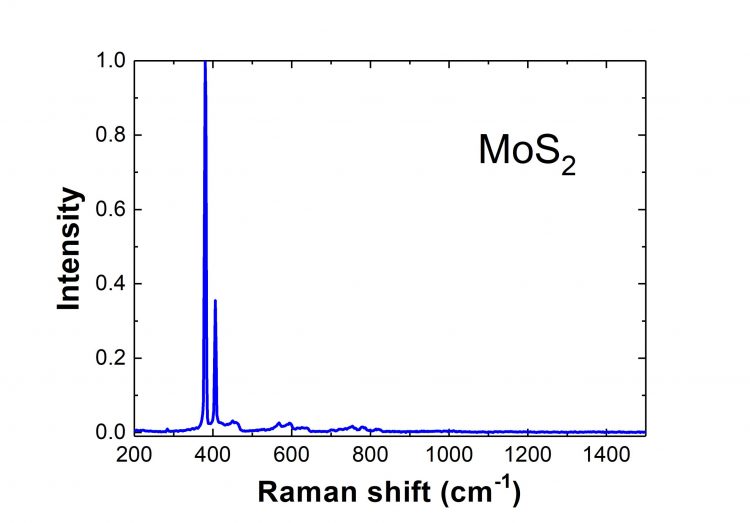Molybdenum Disulfide Raman Spectrum
Molybdenum disulfide is characterized by a layered structure, with the planes of hexagons consisting of covalently bound atoms of Mo and S. The stacked S‐Mo‐S monolayers are held together by weak Van der Waals forces, comprising the bulk MoS2.
Contact us to get access to Raman Spectra Database more than 20 000 chemical and biological substances
Raman spectroscopy of MoS2
Because of its excellent semiconducting properties, MoS2 can be utilized effectively in photovoltaic and photocatalytic applications. For example, field-effect transistors based on a single MoS2 monolayer have shown room-temperature electron mobility comparable to that of graphene nanoribbons, as well as the current on/off ratio as high as 108. Structures of such minimal thickness have been fabricated by the exfoliation method, similar to graphene production. Thus, there can be achieved MoS2 layers that are merely a few atoms thick. Considering that some MoS2 Raman frequencies vary monotonously according to the number of ultrathin flakes, MoS2 Raman spectra can be used as reliable means of determining the precise quantity of the layers.
Raman Spectra Library
Raman spectroscopy can uniquely identify many chemical and biological agents.
All substances


